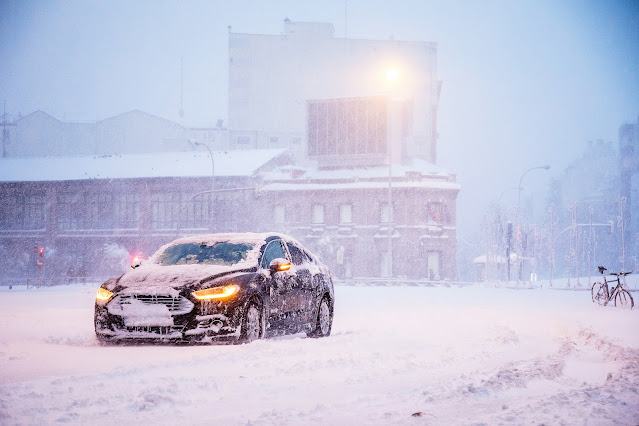You should be taking steps to maintain your car at all times, but let’s be honest, most of the time your car won’t face problems if you forget a few of the small maintenance tasks. You can go a month or two without checking the tire pressure and it won’t be a huge deal.
Unless you’re driving in the winter…
Winter car maintenance is far more important thanks to the temperature dropping. It can be well below freezing overnight and this has an impact on your car. If you jump in and drive off without performing some key checks, your car may face a mixture of problems. This can hinder your safety and damage critical components of your vehicle.
So, before you set off for winter journeys, make sure you perform these five checks:
Fuel
Always check that you’ve got enough fuel in your car throughout the winter. If you don’t, you can face a couple of problems:
- Running out of fuel in the middle of nowhere when it’s very cold
- Your car not starting because there’s not enough fuel in it
When you’re not sure if there’s enough fuel to take you to a gas station, you should try to get there by other means. Perhaps a friend will let you ride with them and you can fill a jerry can up with fuel to take back home. Or, if you break down due to a lack of fuel, call a towing service to take you to the nearest gas station.
Oil
Next, you need to check your car’s oil levels. This is a crucial part of winter maintenance as oil will lubricate the moving parts of your car engine. When the temperature drops, these parts can get a lot stiffer and will need even more oil.
So, if there’s not a good supply of oil in your car, these parts will struggle to function properly and can cause catastrophic issues. If you’re not careful, it could permanently damage the engine and mean you need a replacement.
Some cars have oil level indicators but the manual way of checking is easy. Open your hood and locate the oil compartment - it’ll be on the engine. Pull out the dipstick and see if it is between the min and max levels. When the readings are below the minimum level, your car needs an oil top-up! Keep in mind that oil contracts when it’s cold, so you should check these readings when your car is still warm. Otherwise, it may seem like you’ve not got enough oil, causing you to overfill.
Tires
You put a lot of faith in your tires when driving in the winter. Rain, snow, and ice lead to terrible driving conditions as the roads have less grip. For this reason, experts suggest having double the minimum tire tread level for additional traction.
It’s really smart to get a tread depth gauge to perform this check. Some people use the quarter or penny method, but a proper tread depth gauge will give the most accurate readings. It helps you see how much your tires have worn down and if it’s time to replace them.
Consider getting special winter tires for your car if you live in a freezing area with lots of snow and ice. Winter tires are designed to be a lot thicker and grippier, so they can handle these conditions better than normal tires.
Coolant
All car engines will need coolant to…well…cool the engine down. It’s what stops your engine from overheating, though you may assume it’s not as important during the winter. After all, cold weather means your engine will be colder, right? Surely low coolant levels aren’t an issue as there’s less chance of the engine overheating in these conditions…right?!
Surprisingly, car engines can still overheat in the winter. If anything, there’s just as big of a chance as there is in hot weather. Because the engine starts cold, it tries to work harder to compensate. Without the right coolant levels, this can lead to overheating.
There’s another key benefit to coolant; it contains something called anti-freeze. This solution stops the liquid from freezing inside your engine, so it doesn’t seize up in the winter. Check your coolant levels before every journey or you might end up with a frozen engine.
Lights
Lights are important throughout the year in all seasons, but winter is the darkest period of all. Consequently, your lights need to be on more often. You also need to ensure your fog lights work, just in case it gets hazy in the mornings.
Turn your car on and go through all the light settings to be sure they work. This includes your blinkers - people need to see when you’re turning! It’s a good idea to wipe the lights as well before you get in the car, just to get rid of any dirt or ice that’s formed on them overnight. Even a thin layer of ice can obscure the lights for any cars behind or ahead of you.
Speaking of ice, that’s sort of a hidden sixth check to do. Well, it’s not much of a check as you can clearly see if your car has ice covering it. Don’t drive off until it’s melted away. To do this, switch on the engine and turn the front screen de-misters on. This will heat the windscreen and you can sweep off any ice as it melts. If you’re in a rush, use an ice scraper to get as much off as possible. Never pour hot water on your windscreen as this can cause serious damage to the glass.
Now, you’re all ready to head out on a winter journey without fearing what will happen to your vehicle!


No comments:
Post a Comment